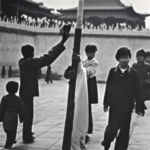One-line Summary:
“The Autobiography of Miss Jane Pittman” is a powerful novel that follows the extraordinary life of a former slave who becomes a symbol of resilience and hope during the Civil Rights Movement.
The Journey of a Remarkable Woman
“The Autobiography of Miss Jane Pittman” takes readers on a captivating journey through the life of its eponymous protagonist, Jane Pittman. Born into slavery in the 1850s, Jane endures unimaginable hardships and witnesses the brutality of the institution firsthand. The narrative unfolds through a series of interviews conducted by a fictional historian, allowing Jane to recount her experiences from her early years as a slave to her later life as a free woman.
As a young girl, Jane is separated from her family and forced to work on a plantation. She endures physical and emotional abuse, but her indomitable spirit remains unbroken. After the Emancipation Proclamation, Jane embarks on a quest for freedom, joining a group of former slaves who are determined to build a new life for themselves. Throughout her journey, Jane encounters both kindness and cruelty, but she never loses sight of her dreams.
A Witness to History
Jane’s life intersects with key moments in American history, making her a witness to significant events that shape the nation. From the Reconstruction era to the Civil Rights Movement, Jane’s story reflects the struggles and triumphs of African Americans in their fight for equality.
During the Reconstruction era, Jane witnesses the rise of the Ku Klux Klan and the implementation of Jim Crow laws, which perpetuate racial segregation and discrimination. She also experiences the Great Migration, as many African Americans leave the South in search of better opportunities in the North.
As Jane grows older, she becomes actively involved in the Civil Rights Movement. She joins protests and marches, fighting for voting rights and an end to racial injustice. Through her participation, Jane becomes a symbol of resilience and hope, inspiring others to stand up for their rights.
The Power of Resilience and Hope
At its core, “The Autobiography of Miss Jane Pittman” is a testament to the power of resilience and hope in the face of adversity. Despite the hardships she endures, Jane remains determined to create a better future for herself and her community.
Throughout the novel, Jane’s unwavering spirit serves as a source of inspiration for those around her. She embodies the strength and resilience of African Americans who have faced oppression throughout history. Jane’s story reminds us of the importance of perseverance and the ability to find hope even in the darkest of times.
- Jane Pittman’s journey from slavery to freedom reflects the struggles and triumphs of African Americans throughout history.
- The novel provides a firsthand account of significant events such as the Reconstruction era and the Civil Rights Movement.
- The story highlights the power of resilience and hope in overcoming adversity.
“I had to go through hell to get to where I am today, but I’m still standing.”
In conclusion, “The Autobiography of Miss Jane Pittman” is a poignant and powerful novel that chronicles the life of a remarkable woman who becomes a symbol of resilience and hope. Through Jane Pittman’s journey, readers gain a deeper understanding of the struggles faced by African Americans throughout history and the power of the human spirit to overcome adversity. This book serves as a reminder that even in the face of unimaginable challenges, hope can prevail.












